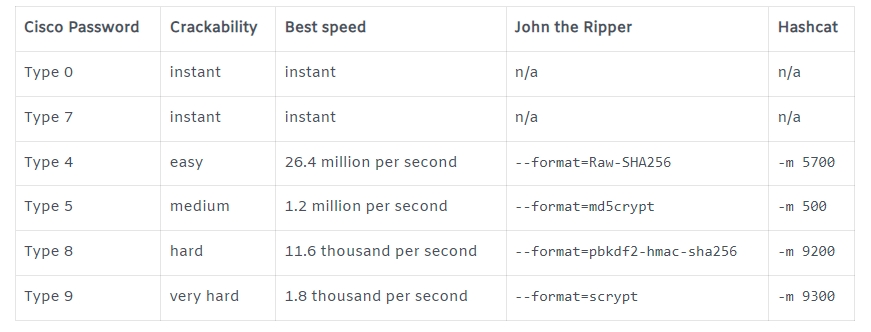Brute Force - Services, web, local, tools & wordlists
A comprehensive brute force guide covering web logins, APIs, and local services like IMAP, MySQL, and LDAP using tools like Hydra, Medusa, Legba, and more.
Become VeryLazyTech member! 🎁
Follow us on:
✖ Twitter @VeryLazyTech.
👾 Github @VeryLazyTech.
📜 Medium @VeryLazyTech.
📺 YouTube @VeryLazyTech.
📩 Telegram @VeryLazyTech.
🕵️♂️ My Site @VeryLazyTech.
Visit our shop for e-books and courses. 📚
Default Credentials
Search in google for default credentials of the technology that is being used, or try these links:
One of the easiest and most overlooked attack vectors is the use of default usernames and passwords. Many systems, especially routers, cameras, IoT devices, web panels, and enterprise software, ship with default login credentials. These are often never changed — making them low-hanging fruit for attackers and red teamers alike.
Before launching a brute-force attack, always check whether the system uses default creds. You can often find these in documentation, online forums, or public lists.
📚 Top Resources for Default Credentials:
Create Your Own Dictionaries
While default credential lists are a great starting point, custom wordlists tailored to your target dramatically increase the success rate of brute-force and dictionary attacks. By gathering intel about the target, you can generate personalized passwords that are far more likely to work.
Here are some effective methods and tools for building your own dictionaries:
Crunch – Custom Pattern Generator
crunch allows you to generate wordlists with fine control over length, character sets, and patterns.
Website-Based Wordlists
Leverage content from target websites to generate relevant wordlists:
CUPP (Common User Passwords Profiler)
Generate passwords based on personal info like name, birthdate, pets, etc.
Wister – Wordlist Mutator
Create highly customized lists by combining keywords and patterns.
Pydictor – Advanced Dictionary Generator
Powerful Python-based wordlist generator with smart rulesets. GitHub: bluetiger9/pydictor

📚 Popular Wordlists & Repositories:
Tools
Hash examples: https://openwall.info/wiki/john/sample-hashes
Hashcat
Hashcat attacks
Wordlist attack (
-a 0) with rules
Hashcat already comes with a folder containing rules but you can find other interesting rules here.
Wordlist combinator attack
It's possible to combine 2 wordlists into 1 with hashcat.
If list 1 contained the word "hello" and the second contained 2 lines with the words "world" and "earth". The words helloworld and helloearth will be generated.
Mask attack (
-a 3)
Wordlist + Mask (
-a 6) / Mask + Wordlist (-a 7) attack
Hashcat modes
Cracking Linux Hashes - /etc/shadow file
Cracking Windows Hashes
Cracking Common Application Hashes
Common Services
Once you've got a solid wordlist, it's time to test it against live services. Below are examples for brute-forcing commonly exposed protocols using Hydra, Nmap, Metasploit, Legba, and more.
Using Metasploit:
AMQP (ActiveMQ, RabbitMQ, Qpid, etc.)
Cassandra / ScyllaDB
Cisco

CouchDB
Metasploit:
Or using Hydra:
Elasticsearch
Hydra Example:
Ncrack Example:
Medusa Example:
Legba Example:
HTTP Burte Force
Login Form bruteforce
POST, Single list, filter string (hide)
POST, 2 lists, filter code (show)
GET, 2 lists, filter string (show), proxy, cookies
Bruteforce Directory/RESTful bruteforce
Arjun parameters wordlist
Path Parameters BF
Header Authentication
Basic, 2 lists, filter string (show), proxy
NTLM, 2 lists, filter string (show), proxy
Cookie/Header bruteforce (vhost brute)
Cookie, filter code (show), proxy
User-Agent, filter code (hide), proxy
Host
HTTP Verbs (methods) bruteforce
Using file
Using inline list
Directory & Files Bruteforce
HTTP Basic Auth
HTTP - NTLM
HTTP - Post Form
For https you have to change from "http-post-form" to "https-post-form"
HTTP - CMS -- (W)ordpress, (J)oomla or (D)rupal or (M)oodle
Keberoasting
Keepass
Lucks image
https://github.com/glv2/bruteforce-luks
Another Luks BF tutorial: http://blog.dclabs.com.br/2020/03/bruteforcing-linux-disk-encription-luks.html?m=1
NTLM cracking
Open Office Pwd Protected Column
If you have an xlsx file with a column protected by a password you can unprotect it:
Upload it to google drive and the password will be automatically removed
To remove it manually:
In order to use oracle_login with patator you need to install:
Offline OracleSQL hash bruteforce (versions 11.1.0.6, 11.1.0.7, 11.2.0.1, 11.2.0.2, and 11.2.0.3):
PDF
PDF Owner Password
To crack a PDF Owner password check this: https://blog.didierstevens.com/2022/06/27/quickpost-cracking-pdf-owner-passwords/
PGP/GPG Private key
PostgreSQL
PFX Certificates
You can download the .deb package to install from https://http.kali.org/pool/main/t/thc-pptp-bruter/
RDP
Redis
SFTP
SQL Server
Weak SSH keys / Debian predictable PRNG
Some systems have known flaws in the random seed used to generate cryptographic material. This can result in a dramatically reduced keyspace which can be bruteforced with tools such as snowdroppe/ssh-keybrute. Pre-generated sets of weak keys are also available such as g0tmi1k/debian-ssh.
STOMP (ActiveMQ, RabbitMQ, HornetQ and OpenMQ)
The STOMP text protocol is a widely used messaging protocol that allows seamless communication and interaction with popular message queueing services such as RabbitMQ, ActiveMQ, HornetQ, and OpenMQ. It provides a standardized and efficient approach to exchange messages and perform various messaging operations.
VNC
Winrm
ZIP
Known plaintext zip attack
You need to know the plaintext (or part of the plaintext) of a file contained inside the encrypted zip. You can check filenames and size of files contained inside an encrypted zip running: 7z l encrypted.zip
Download bkcrack from the releases page.
7z
Online cracking databases
https://shuck.sh/get-shucking.php (MSCHAPv2/PPTP-VPN/NetNTLMv1 with/without ESS/SSP and with any challenge's value)
https://www.onlinehashcrack.com/ (Hashes, WPA2 captures, and archives MSOffice, ZIP, PDF...)
https://crackstation.net/ (Hashes)
https://md5decrypt.net/ (MD5)
https://gpuhash.me/ (Hashes and file hashes)
https://hashes.org/search.php (Hashes)
https://www.cmd5.org/ (Hashes)
https://hashkiller.co.uk/Cracker (MD5, NTLM, SHA1, MySQL5, SHA256, SHA512)
Check this out before trying to brute force a Hash.
Learn & practice For the Bug Bounty
Last updated
Was this helpful?